
The outer edge of our galaxy is full of clusters too faint to see
Star Clusters, Paper Summaries
23 June 2025 | Reading time: 3 minutes
The outskirts of our galaxy are a curious place for open clusters. Two clusters - Berkeley 29 and Saurer 1 - are further away from our galaxy’s centre than any other known open clusters. More than 2 kpc (∼6000 light years) stand between the edge of the ‘usual’ cluster distribution and these two objects. Are they alone, or are there more clusters like them out there waiting to be discovered?
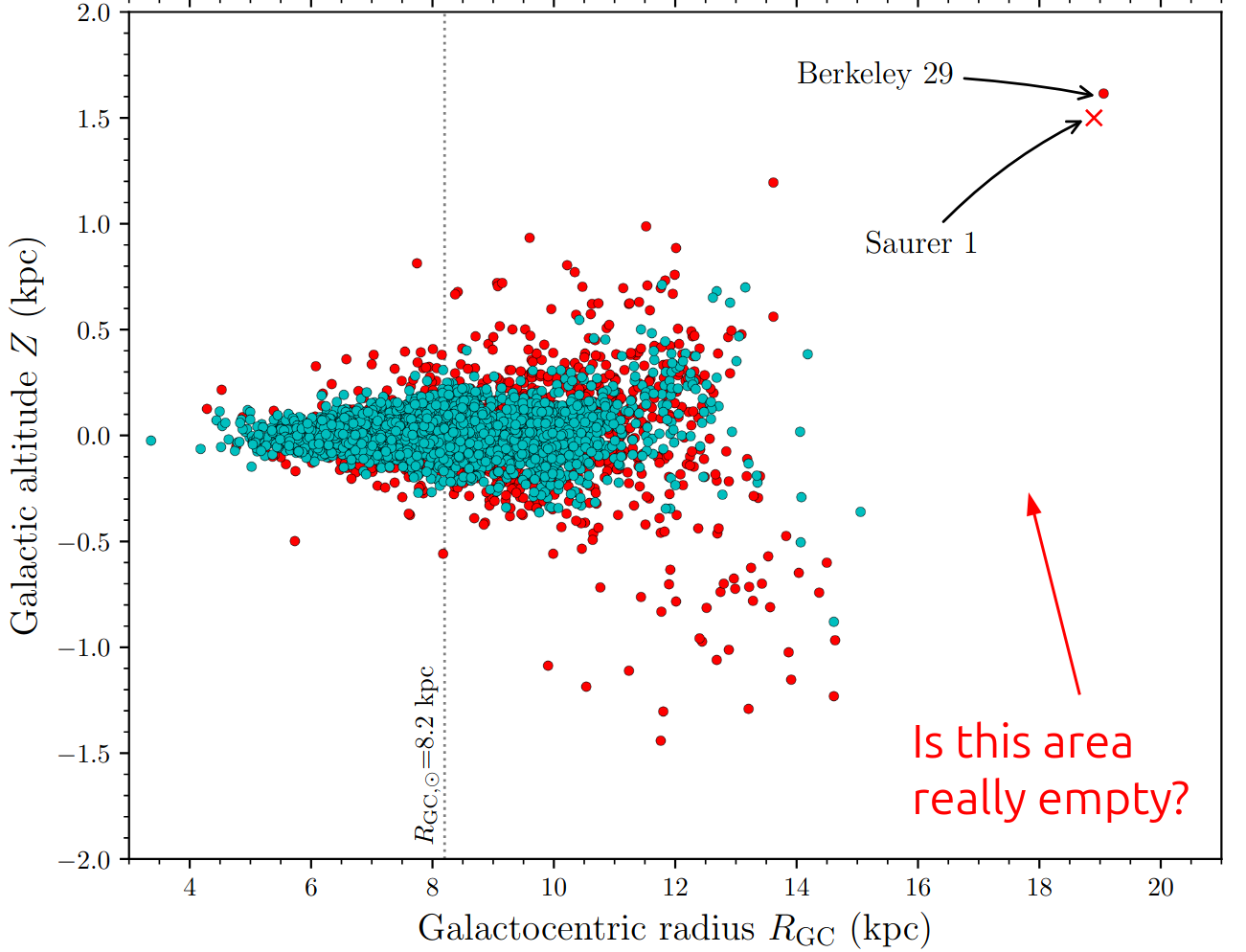
I led a paper where we tried to answer this and more about our galaxy’s outer edge. It was recently accepted to A&A, and is out now on the arXiv!
A tale of missing clusters
The main problem we had to solve is that we don’t know how many clusters could be missing from a cluster catalogue like my own. The Milky Way should contain about ∼10⁵ open clusters in total, yet just ≈5600 are known. The chances are that much of this ‘empty void’ without clusters could just be a selection effect, where some clusters are missing from our catalogue because they’re too faint or hard to see.
To solve this, we developed a new technique that uses injection and retrieval to empirically test the completeness of a cluster catalogue. Using a newly developed cluster simulation suite (which is open source in ocelot!), we injected simulated clusters with known parameters into Gaia data, and then tried to retrieve them with an identical setup to the cluster detection pipeline from my catalogue.
Why can’t we see them?
Repeated almost 200,000 times, these injection and retrieval experiments give us a great idea of what causes clusters to be missing from a catalogue like my own. There are many different parameters - but it mostly depends on a cluster’s mass, distance, extinction, and age.
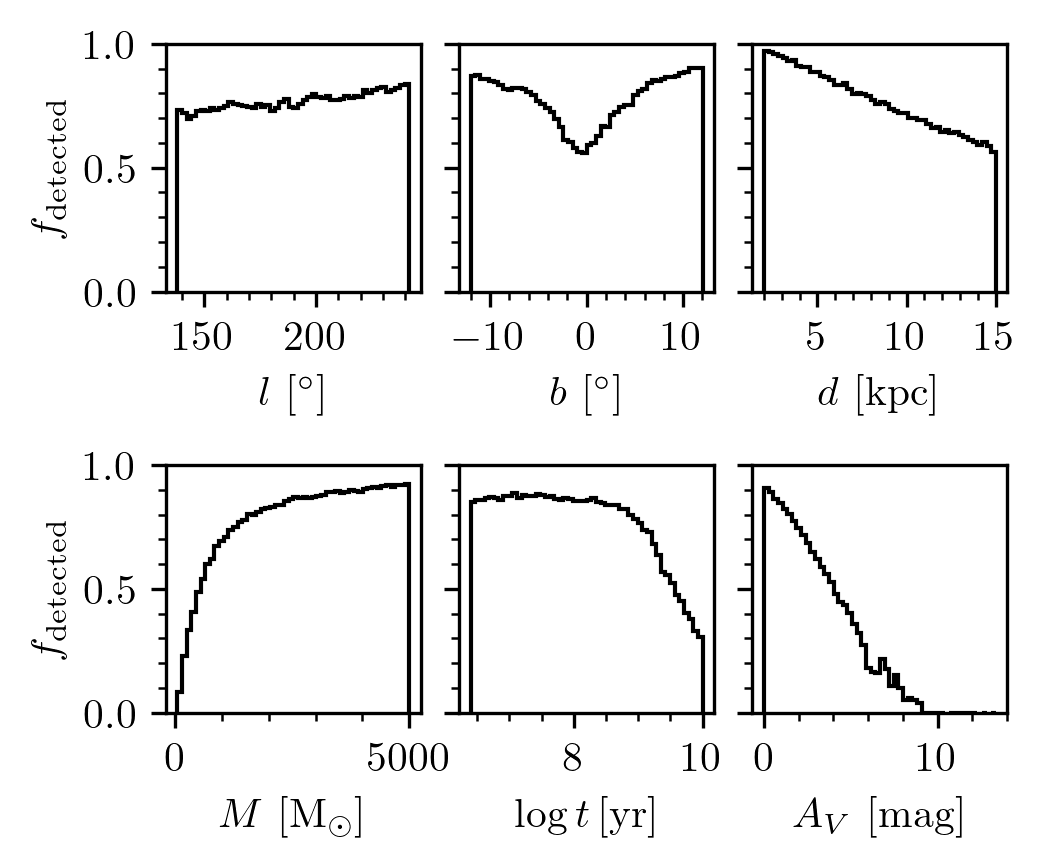
Looking at the distribution of dust in the outer part of our galaxy, we can see why! It’s much easier to recover clusters in the less-dusty regions. This is also reflected in the distribution of clusters in my catalogue - it’s quite clear that dusty areas seem to be difficult to see clusters in.
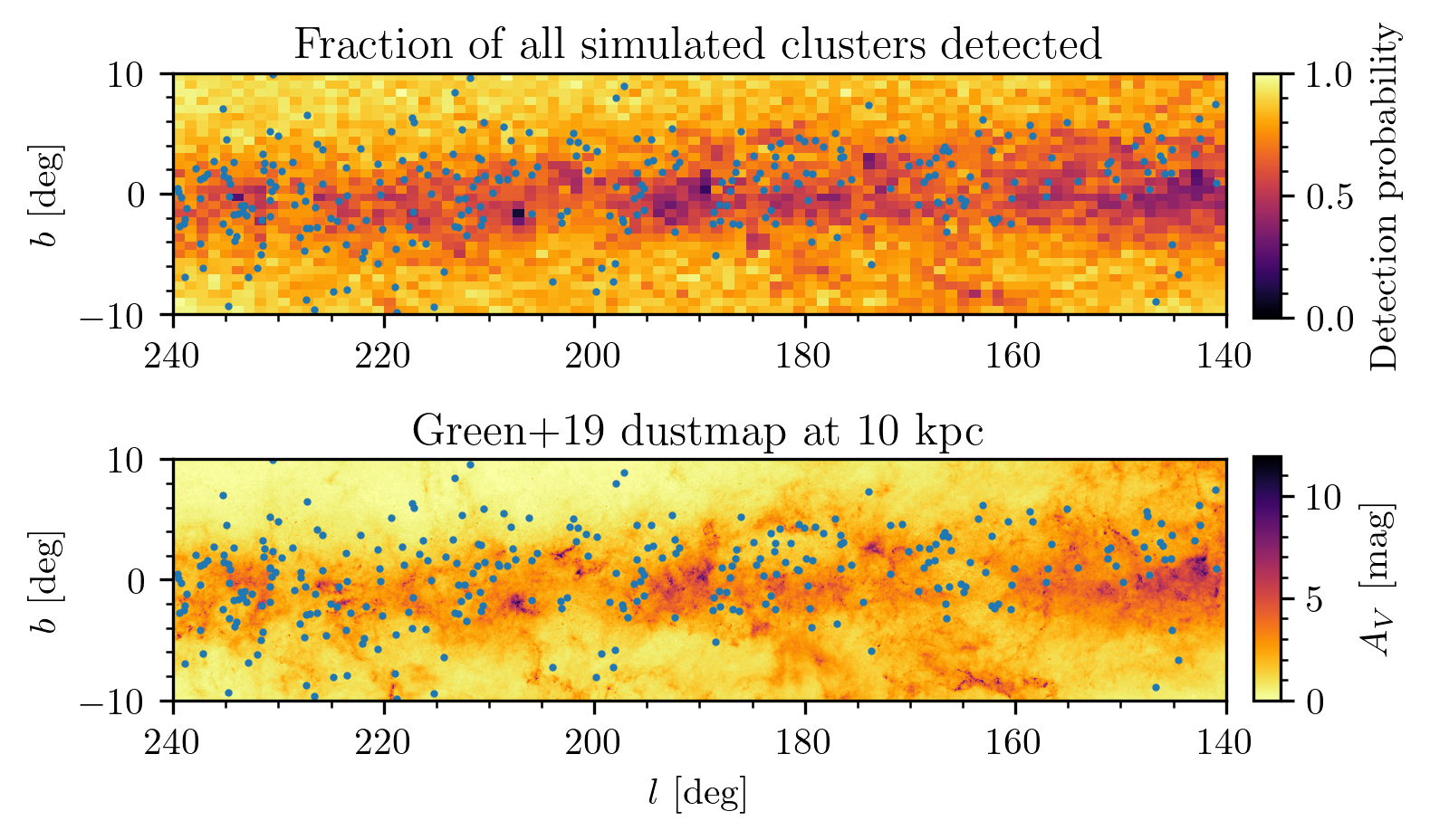
The hidden clusters at the edge of our galaxy
We used these results to show a few interesting things about this region.
Firstly, we ran some models, and showed that the typical age of clusters in our galaxy’s outer reaches is much older than near to the Sun - suggesting that clusters are formed and destroyed more slowly there, or that the clusters migrated out there from the centre of our galaxy.
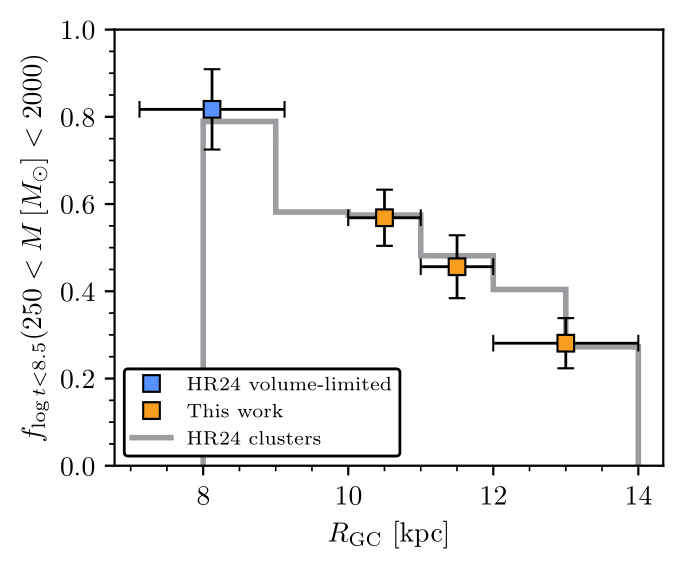
Secondly, we were able to provide a satisfying answer for Berkeley 29 and Saurer 1. It is almost impossible to detect distant open clusters with Gaia data alone, because dust near to the plane of our galaxy gets in the way. We can probably only see them at all because they exist in a small pocket in the upper-left of the outer galaxy that has a comparatively low amount of dust.
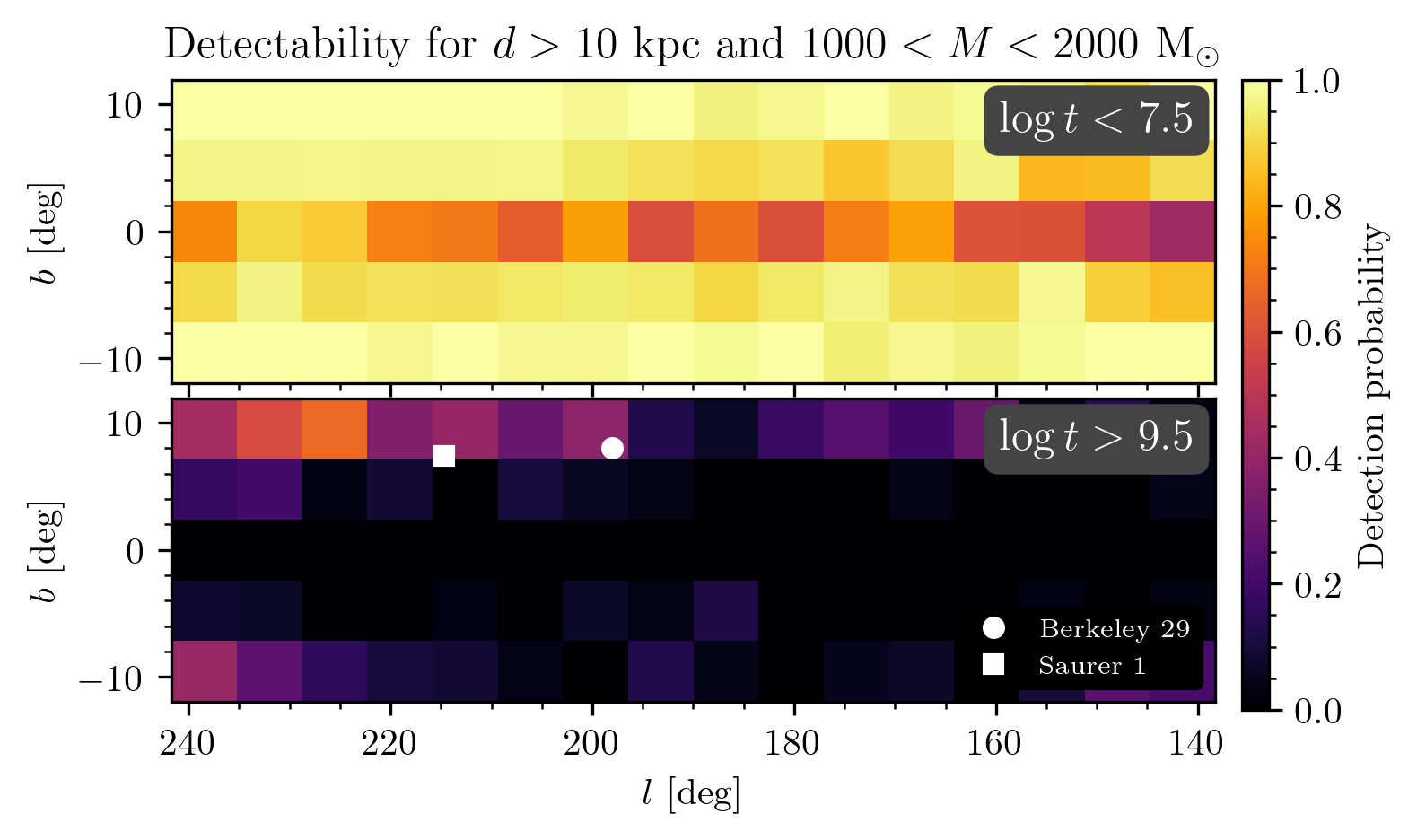
The next steps
This work started as a conversation between myself and a few of my other coauthors (including e.g. Tristan Cantat-Gaudin) about whether it could even be computationally possible to derive the completeness of a cluster catalogue in an empirical way like this. And the great news is that it is!
This initial test in the outer part of our galaxy was easier to do because there are fewer stars out there, making algorithms faster to run. Our next paper will be about scaling this up to the full galaxy (you can see an early preview with these talk slides from EAS), and we hope to get it published soon so that you could use it in your science! We’re planning on making an open source Python package that will tell you the probability that a hypothetical cluster would be in my catalogue - stay tuned!